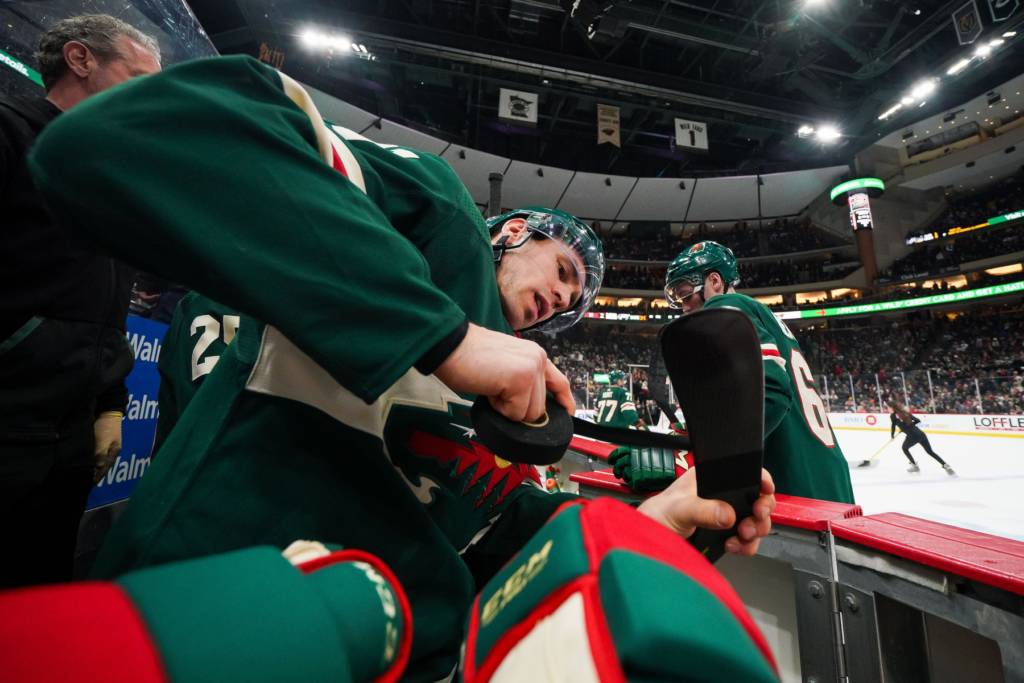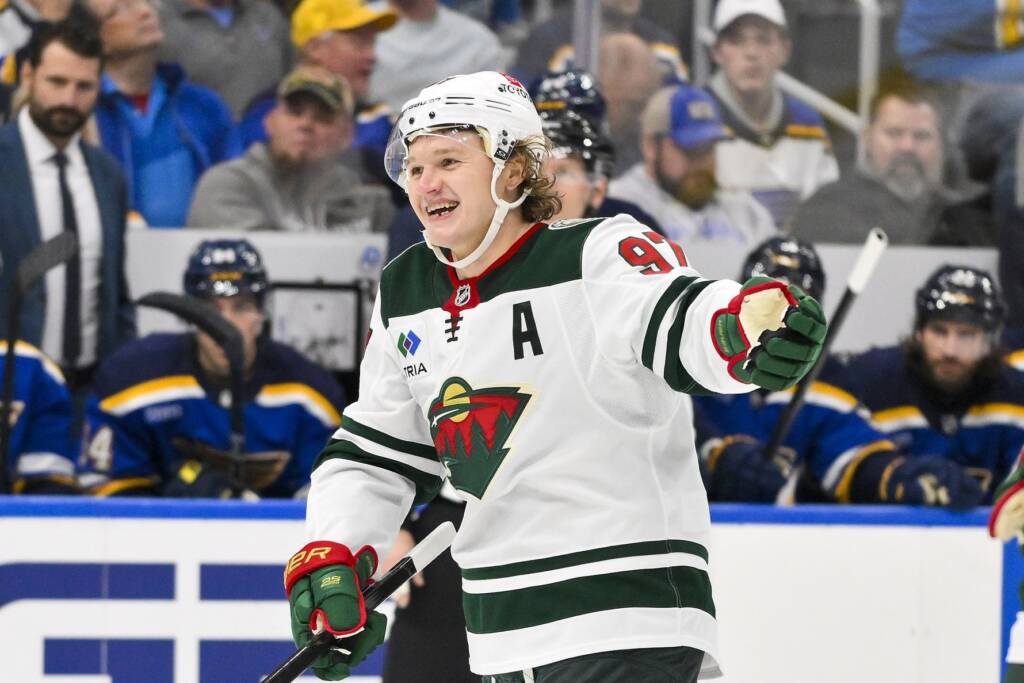They say in football that if you have two quarterbacks, you don’t have a quarterback. What happens when you have six third-line centers in hockey? The Minnesota Wild are finding out, and it isn’t pretty. We’re three games into the season, and we have seen the Wild shuffle their lineup at center on almost a period-to-period basis.
The problem isn’t Nick Bonino, Nick Bjugstad, Marcus Johansson, or Victor Rask. As NHL veterans, they’ve long established who and what they are about. It’s unfair to ask them to be more than what they are at this point in their careers. Each one of them is depth centers, at best, and to hope one will magically exhibit top-line center traits is foolhardy.
The lack of a top center has had ripple effects throughout the team, but none more glaring than on the power play. Zach Parise played “center” on the power play, taking faceoffs throughout camp and in the opening game against the Los Angeles Kings.
It’s a move that left an immediate impression, as Parise and Minnesota struggled in the faceoff dot. One of the most-quoted stats of the night from commentators during and after Game 1 in Los Angeles was the Wild combining to win only 39% of draws. In Game 2, head coach Dean Evason made changes to the power play to improve faceoff win efficiency.
The change involved Kirill Kaprizov, who teammates and media alike raved about as being the “real deal,” dropping to the second power-play unit in favor of placing a natural center in to win more faceoffs. The improvement on faceoffs was noticeable. The improvement on offense was not.
Just as it was foolhardy for Bill Guerin to believe you could patch a top-line center hole with Johansson, Bjugstad, and duct tape, it was also foolhardy for Evason to change his power play to chase faceoff wins. A lot of research has gone into determining whether or not faceoffs actually matter, and ultimately the conclusion is that they matter very little in the grand scheme of things.
How can that be? The NHL measures it, coaches preach their importance, and TV broadcasts discuss faceoffs as a pivotal part of the game. If obtaining possession of the puck leads to more shots, and shots correlate to goals, then winning faceoffs must help toward winning the game, correct?
To an extent, that’s right. Craig Tabata of the now-defunct analytics site HockeyProspectus.com discovered that shots for, and thus goal scoring does increase for teams that win face-offs. Here’s the catch: The effect lasts only for the ten seconds immediately following the faceoff. After that, scoring evens out between the winners and losers of a draw.
Faceoffs have so much attention on them because they are how play begins in an otherwise fluid game. No matter what zone a faceoff takes place in, the effect is still negligible after ten seconds. Gabriel Desjardins wrote in 2015 that for a team to realize the positive impact of winning faceoffs, they’d need to win 164 more faceoffs while on special teams to see an additional win in the standings.
How faceoffs are tracked is also flawed. Former New Jersey Devils analyst Rachel Doerrie outlines these flaws in a 2017 paper. A center can win the draw but have the wingers lose possession or vice versa. In fact, wingers greatly impact whether puck possession after a faceoff is won or lost. Placing the onus of winning or losing a faceoff solely on the center doesn’t reflect the nature of how players and coaches strategize for faceoffs.
While it was unsuccessful in scoring goals in Game 1, the Wild power play had the look of a unit that was both active and creative. The team had 16 shot attempts, with 10 of those ending up on goal despite the losses in the dot. In Game 2, when Evason changed it up, the Wild power play went from 41% on the draws to 88%. That sounds like a great improvement, except the Wild had a stagnant power play. By every metric — shot attempts, shots on goal, high-danger chances — they were worse. Even if they didn’t score with the man advantage on both nights, the difference between Game 1 and Game 2 was night and day.
Faceoffs shouldn’t be looked at more than what they are: a fight for possession. No different than a battle along the wall, or a turnover at center ice. As Alison Lukan wrote when discussing the Blue Jackets’ struggles in the faceoff circle in 2017, “The key to truly understanding any impact from a face-off victory is to manage that 10 seconds immediately after a puck drop, win or lose.” Furthermore, a team can be upside down in faceoffs and still dominate the puck possession battle. After all, faceoffs amount to 2% of the game.
Switching Kaprizov to the second unit took away a weapon in order to correct a problem that doesn’t quite have the impact that conventional wisdom says it does. Think about it: The Wild practiced this formation all training camp long, and it took one poor night on faceoffs for them to abandon it altogether.
Barring Marco Rossi impacting the lineup from the get-go, or Guerin swinging a trade to address the center position, the Wild are in it for the long haul with the group they have. The research is clear that a good faceoff percentage doesn’t mean a team will make the playoffs. So rather than try to correct a non-issue in the grand scheme of things, the Wild are better served knowing that the power play equipped with Kevin Fiala and Kaprizov is going to improve their chances at winning more often than not.

